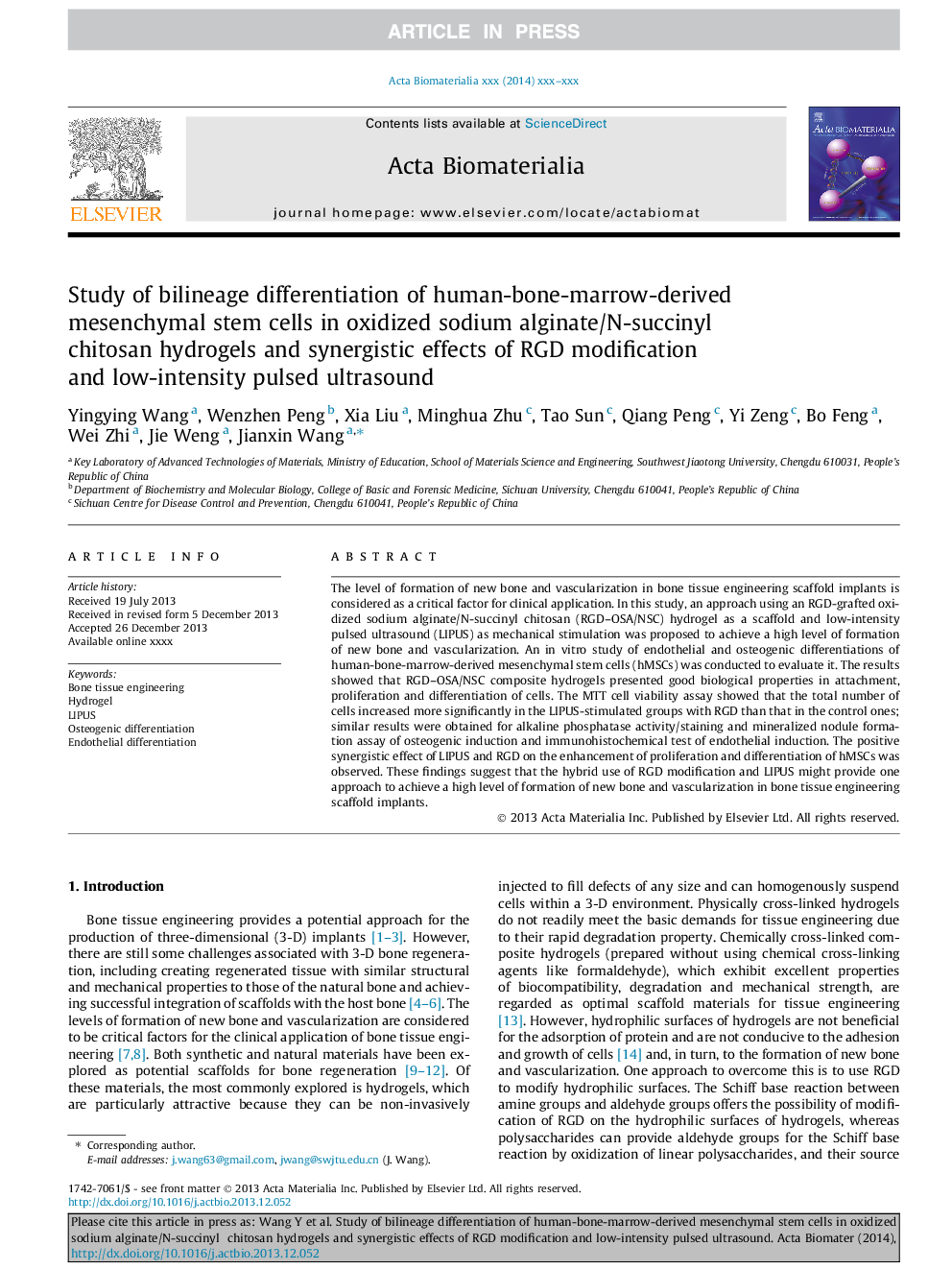| Article ID | Journal | Published Year | Pages | File Type |
|---|---|---|---|---|
| 10159090 | Acta Biomaterialia | 2014 | 11 Pages |
Abstract
The level of formation of new bone and vascularization in bone tissue engineering scaffold implants is considered as a critical factor for clinical application. In this study, an approach using an RGD-grafted oxidized sodium alginate/N-succinyl chitosan (RGD-OSA/NSC) hydrogel as a scaffold and low-intensity pulsed ultrasound (LIPUS) as mechanical stimulation was proposed to achieve a high level of formation of new bone and vascularization. An in vitro study of endothelial and osteogenic differentiations of human-bone-marrow-derived mesenchymal stem cells (hMSCs) was conducted to evaluate it. The results showed that RGD-OSA/NSC composite hydrogels presented good biological properties in attachment, proliferation and differentiation of cells. The MTT cell viability assay showed that the total number of cells increased more significantly in the LIPUS-stimulated groups with RGD than that in the control ones; similar results were obtained for alkaline phosphatase activity/staining and mineralized nodule formation assay of osteogenic induction and immunohistochemical test of endothelial induction. The positive synergistic effect of LIPUS and RGD on the enhancement of proliferation and differentiation of hMSCs was observed. These findings suggest that the hybrid use of RGD modification and LIPUS might provide one approach to achieve a high level of formation of new bone and vascularization in bone tissue engineering scaffold implants.
Related Topics
Physical Sciences and Engineering
Chemical Engineering
Bioengineering
Authors
Yingying Wang, Wenzhen Peng, Xia Liu, Minghua Zhu, Tao Sun, Qiang Peng, Yi Zeng, Bo Feng, Wei Zhi, Jie Weng, Jianxin Wang,
